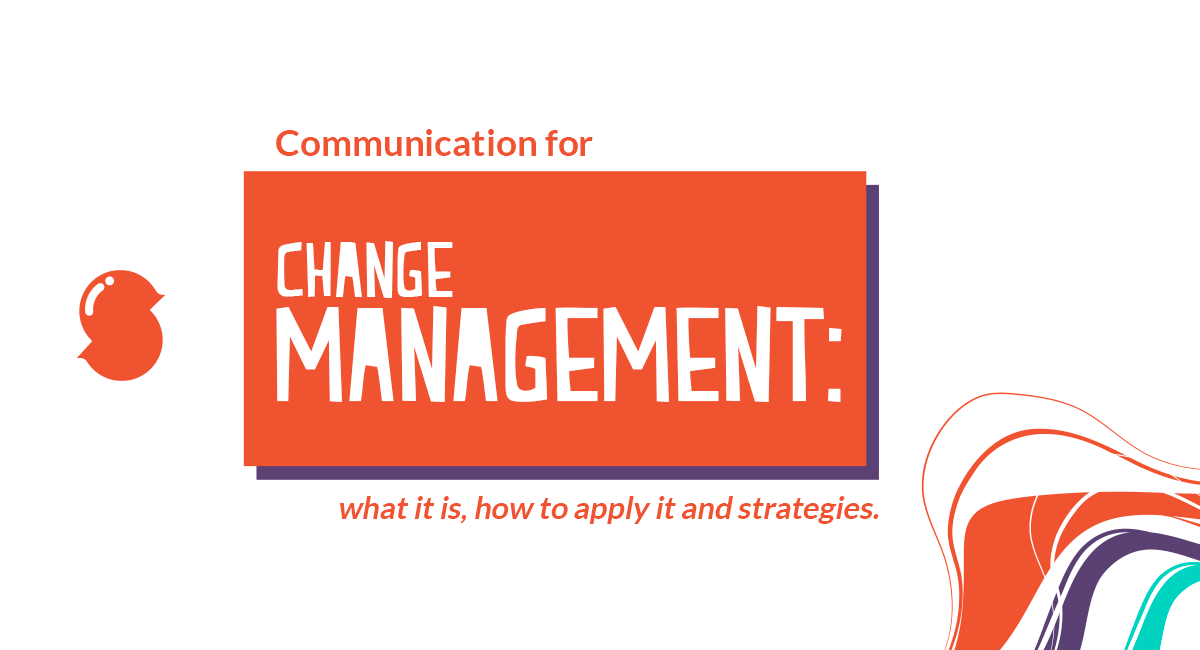Communication for Change Management: what it is and how to apply it and strategies

Change management is an essential element for the evolution and growth of any organization, and one of the most challenging tasks for leaders and managers. However, effective change management is not possible without strategic and comprehensive communication.
Whether a company is implementing a new technology, restructuring teams or adopting a new business strategy, the ability to successfully lead a transition is fundamental to long-term growth and results.
In this article, we will explore the fundamental role that communication plays in organizational Change Management and how it can be the key to success in times of transformation.
What is communication for Change Management?
Communication for Change Management is a strategic approach that involves planning, implementing and managing communication during organizational transformation processes. It aims to ensure that change-related messages are understood, accepted and internalized by all team members and stakeholders.
What are the benefits of communication for Change Management?
Communication in Change Management plays a creative and critical role in creating awareness of the need for change. When well-planned and applied within a Change Management plan, it motivates and encourages the active participation of the people involved. Open, transparent and inclusive communication during the Change Management process can strengthen the culture of trust and collaboration.

“Change often brings uncertainty, which can cause anxiety. A lack of understanding of expectations can lead to confusion and misunderstandings. Communication in Change Management provides clear guidelines on what is expected of each team member during the change process and helps to dispel uncertainty, increasing trust in the process. We can manage a change without focusing on communication. Still, people like to become part of the process, and communication helps with this, as we can integrate different audiences with different ways of communicating.”
Niedja Anjos, Head of Customer Service at Agência Sabiá
Communication in Change Management helps to collect information, opinions, evaluations or comments from those involved throughout the change process. This enables continuous adjustments and improvements to the change strategy. This way, concerns can be identified and addressed, reducing resistance and promoting a smoother transition.
Four benefits of communication for Change Management
1. Engagement and commitment
Effective communication involves team members right from the start, keeping them informed about the objectives of the change and the reasons behind it. This helps to create a sense of purpose and commitment, which are fundamental to the success of the transition.
2. Reducing resistance
Resistance to change is a common obstacle. Through transparent and honest communication, it is possible to address the concerns of individuals in the process, dispelling fears and creating an environment that is more receptive to change.
3. Clarity of expectations
a lack of understanding of expectations can lead to confusion and misunderstandings. Effective communication provides clear guidelines on what is expected of each team member during the change process.
4. Motivation and inspiration
communication should not be limited to facts and figures. It should also inspire and motivate the team, showing how the change can benefit the organization and the individuals involved.
Communication strategies for Change Management
For effective communication in Change Management, it is essential to follow well-defined steps to ensure the transformation is understood, accepted, internalized and successfully adopted.
Agência Sabiá has people certified by Prosci, which has as one of its central elements the ADKAR, a prevalent model in organizations, which covers the five essential stages of change: Awareness, Desire, Knowledge, Ability, Reinforcement.
The first step is the creation of awareness, where it is communicated that the change is about to happen. At this stage, people must understand what exactly is going to change. Next, desire is developed, emphasizing the benefits of change to motivate the team. The third step seeks to broaden knowledge, ensuring that everyone thoroughly understands what to do and the steps to follow on the journey of change, establishing trust.
The penultimate step is enablement, in which people receive training and resources to prepare for the future and use the necessary tools. Finally, the last stage is reinforcement, which occurs throughout the change process, providing ongoing support, communicating results and reinforcing the importance of transformation.

“We go through transformations all the time, at an ever-increasing pace. Communication comes in to increase the fluidity of the Change Management process. It’s a tool present in process surveys, communications, videos, recognitions, celebrations and gifts, or even in an off-site immersion. When we manage to bring people on board with the change the company wants to make, everyone is on the same page, engaged and on board. And when they go along, they do their best. To do this, you need to immerse yourself in the reality of the company and the people with empathy.”
Mariana Oliveira, specialist copywriter at Agência Sabiá
Six steps to successfully implement change
1. Research
Before starting any change process, it is essential to carry out a research study to understand the possible resistance that may arise. This involves identifying their location, whether in teams, departments or between individuals. Knowing the points of attention allows you to be prepared to address them creatively and effectively during the implementation of the change.
2. Plan
Based on the initial research, we develop a detailed communication plan. This includes setting clear goals, identifying key target audiences, determining the most appropriate communication channels and establishing a timeline. Planning is vital to ensuring that communication is organized and targeted.
3. Influencing
We involve the organization’s management and leadership from the outset. Leadership is vital in influencing and setting a positive example during change. They must be committed to the objectives of the transformation and be visible to support implementation.
4. Communicate/Generate knowledge
This is the execution phase of the communication plan. It is essential to clearly and consistently communicate the objectives of the change, the expected benefits, progress and any relevant information. Make sure you adapt the message to different audiences and various channels.
5. Reinforce knowledge
Communication should not be a one-off event but continuous throughout the change process. Reinforcing knowledge involves repeating key messages, providing regular updates and continuing to communicate with those involved about the changes and their implications. This helps maintain focus and commitment throughout the process.
6. Close the loop or start again
After implementing the change, evaluate the results and the impact of the communication. If the change is successful, it’s time to end the cycle and recognize the achievements. However, if there are persistent challenges or additional changes, the process may need to be restarted based on feedback and lessons learned.